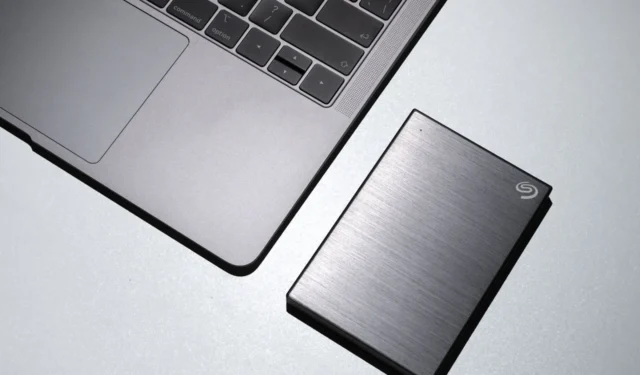
External hard drives have become indispensable for users who require additional storage for vital data. With larger file sizes for high-resolution images, 4k videos, and massive game files, a computer’s internal hard drive might quickly run out of storage space.
External hard drives come in handy in this situation. They are one of the most widely used and cost-effective methods of storing enormous volumes of data. When compared to SSDs, they are less expensive and give greater storage at a comparable price range.
The tech industry is swamped with external hard drive options, so selecting one that meets all of your needs might be difficult. Many things must be considered before making a purchase, including capacity, speed, and dependability.
This tutorial outlines the various elements to consider when selecting the best hard drive for your needs.
While selecting an external hard disk, examine the connection type as well as other variables.
1) Storage capacity
When purchasing an external hard drive, one of the first things to consider is storage capacity.
The storage capacity you select is determined by the amount of data you intend to store. If you are a casual user who only wants to keep important documents, images, and a few films, 1TB of storage capacity is plenty. If you’re a content maker, photographer, or videographer, you’ll need more storage space. Look for drives with 2TB or more storage in such circumstances.
External hard drives range in storage capacity from a few hundred gigabytes (GB) to several terabytes (TB). 1TB, 2TB, 4TB, and 8TB are the most prevalent storage capacity. While selecting a storage capacity, keep your current and future needs in mind.
2) Speed
Another important element to consider is the speed of an external hard disk. The speed of your hard disk affects the entire performance of your computer, especially if you use it for video editing or gaming.
Hard drives range in speed from 5400 to 7200 RPM. The higher the RPM, the faster the drive; nevertheless, it is also more expensive.
The performance of a hard disk is not just determined by its speed. The speed of data transfer is determined by the drive’s interface. Most external drives now include USB 3.0, which provides a higher data transmission rate than USB 2.0. If you have a newer computer or device, USB Type-C connectivity is recommended because it is speedier and transports data more efficiently.
3) Connection Type
The data transfer speed and how the external hard disk connects to your computer are determined by the connection type.
There are various connection options, including USB, FireWire, and Thunderbolt. The most common connection type is USB, which is compatible with practically all PCs. It is also one of the slowest, with USB 2.0 allowing data transfer rates of up to 800Mbps and USB 3.0 offering data transfer rates of up to 5Gbps. With a data transfer rate of up to 40 Gbps, Thunderbolt 4 is the fastest connection type.
Consider the data transfer speed you demand while deciding on a connection type. If you frequently transfer huge files, Thunderbolt 4 is the best option because it provides the fastest transfer speed.
4)Portability
Portability is also important, especially if you intend to use your drive on the fly.
Portable hard drives are often small and light, making them convenient to transport. They may not, however, provide as much storage as the more substantial variations.
If you use your drive mostly at home or at the office, a larger external drive may be a better alternative.
5) Durability
When selecting an external hard drive, one of the most important elements to consider is durability. External hard drives are delicate and easily damaged if they are dropped or knocked over by mistake.
A robust drive is a fantastic choice if you intend to use it on the go or for an extended period of time. It should be protected by a strong enclosure to withstand accidental drops and collisions.
It is critical to consider a drive’s resistance to external factors such as dust and water when considering its durability. There are ‘rugged’ external drives built to endure extreme environments, making them perfect for use outdoors or in an industrial setting.
You may make an informed decision on a product that matches your storage needs by following these suggestions as well as researching and comparing different drives.




Leave a Reply ▼